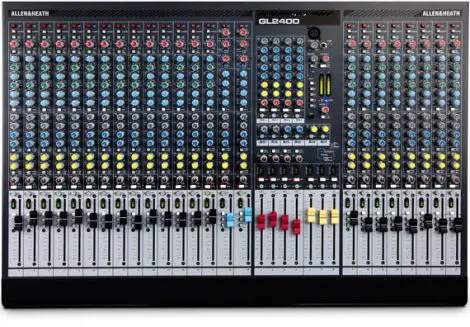

- #UNDERSTANDING MIXING LIVE SOUND SERIAL#
- #UNDERSTANDING MIXING LIVE SOUND PATCH#
- #UNDERSTANDING MIXING LIVE SOUND FULL#
By substituting digital signal processing chips in place of costly and bulky analog circuitry, digital mixers can provide you with sophisticated channel equalizers and in-line dynamics, as well as effects and output processing such as graphic EQs. Digital MixersĬompared with analog mixers, digital live sound mixing consoles are extremely flexible and incredibly compact. Lastly, analog mixers are more susceptible to environmental factors, such as dusty faders, dirty pots, and bad power that can introduce noise into your sound. Along with the bulky nature of analog boards, this outboard gear can make touring with an analog rig inconvenient.
#UNDERSTANDING MIXING LIVE SOUND FULL#
Likewise, the limited or nonexistent onboard signal processing can mean supplementing your mixer with a rack full of outboard compressors, effects, and graphic EQs.
#UNDERSTANDING MIXING LIVE SOUND PATCH#
While the signal flow in an analog mixer is simple, it’s also relatively inflexible, which often requires the addition of switching systems or patch bays. Once you understand one analog mixing console, you can probably move to another with little or no learning curve.Īnalog live sound mixers hold up perfectly for modest and even large-scale sound reinforcement applications, but their limitations become apparent when it comes to touring rigs and technically demanding shows. Veteran live sound engineers appreciate the visual feedback all these individual controls provide, which allows them to assess and fix signal flow problems very quickly. All channel processing is literally in-line between the input gain and the output fader, and tweaking channel EQs or adjusting sends is as easy as reaching out and grabbing the control of whichever channel you need to change. Signal flow on even full-scale analog mixers is fairly simple, with inputs hard-wired to corresponding channel strips. For starters, they tend to cost less than digital mixing consoles - particularly at the entry-level price point - and even an inexpensive live mixer can reliably handle a wide range of sound-reinforcement applications. She is also a historian of science and technology with research interests including the history of sound technologies in live performance, understanding and management of hearing risk in sound professionals, and exploring innovative and experimental ways to effectively and engagingly display both historical sound and sound technologies in the museum and, more broadly, the use of sound to enhance visitor experience in museums.Even in a world of digital technology, analog live mixing consoles have a lot going for them. Jamieson has particular responsibility for sound technologies in the collections. The museum explores the transformative impact of sound and image technologies on our lives. To what extent might we consider the mixing console to be a musical instrument – as much as a guitar or piano – and similarly, to what extent is the live mix engineer a musician - or not?Īnnie Jamieson is Associate Curator of Science and Technology at the National Science and Media Museum, Bradford, UK.

Whilst there is a wide-spread, though not ubiquitous, view in the live sound industry that the front-of-house mix is art, while the set-up of the PA system is science, this distinction has not received much consideration in musicology. While the relationship between musical artists and record producers has been well-addressed and there is little dispute that the studio producer often plays an important role in the artistic development of the music (consider George Martin as the '5th Beatle', for example), the production of live music has been little explored. In this talk, I will discuss plans for a new research project to explore the role of the front-of-house mixing console as a boundary object between the aesthetic production of the music and the technical infrastructure of the PA system, and the mix engineer as mediator.

This console came to the museum with an unusually rich provenance, raising opportunities for both enhanced curation and innovative research through the exploration of its use and users. 003, from 1990, used for over 25 years by many of the UK’s top live sound engineers, in venues from Wembley Stadium to festivals across Europe, and for artists as diverse as Nina Simone, Prince, PJ Harvey and The Prodigy.
#UNDERSTANDING MIXING LIVE SOUND SERIAL#
The star of the National Science and Media Museum’s Sound Technologies collection is the Midas X元 48-channel mixing console, serial no. Dr Annie Jamieson delivers a colloquium on mixing live sound


 0 kommentar(er)
0 kommentar(er)
